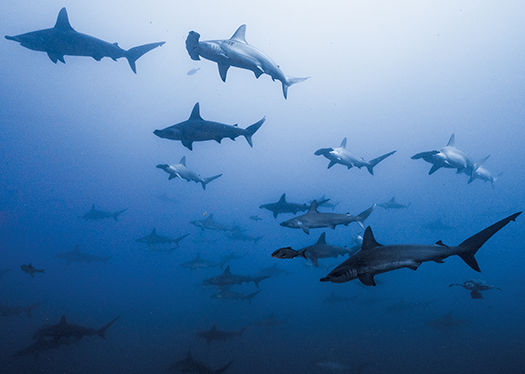
Sharks congregating near a seamount in Ecuador’s Galápagos Marine Reserve. (Photo by Andy Mann)
In 2014, researchers visiting the Itabaca Channel in Ecuador’s Galápagos Islands put acoustic monitoring and satellite tracking devices on a captured female tiger shark (Galeocerdo cuvier) and returned her to the sea. The shark, which they named Yolanda, moved in Galápagos waters for three years, after which she seemed to disappear. Scientists thought they’d heard the last of her—until, that is, June of this year. That’s when a review of monitoring data gathered near Costa Rica’s Cocos Island, 640 kilometers (400 miles) to the north, revealed Yolanda had swum in those waters for three weeks in November of 2020. The discovery underscored the migratory travels between the Galápagos and Cocos of shark species such as the tiger, great hammerhead (Sphyrna mokarran), silky (Carcharhinus falciformis) and Galápagos (Carcharhinus galapagensis), as well as whale sharks (Rhincodon typus), rays and sea turtles. Such is the traffic that scientists call the route the... [Log in to read more]